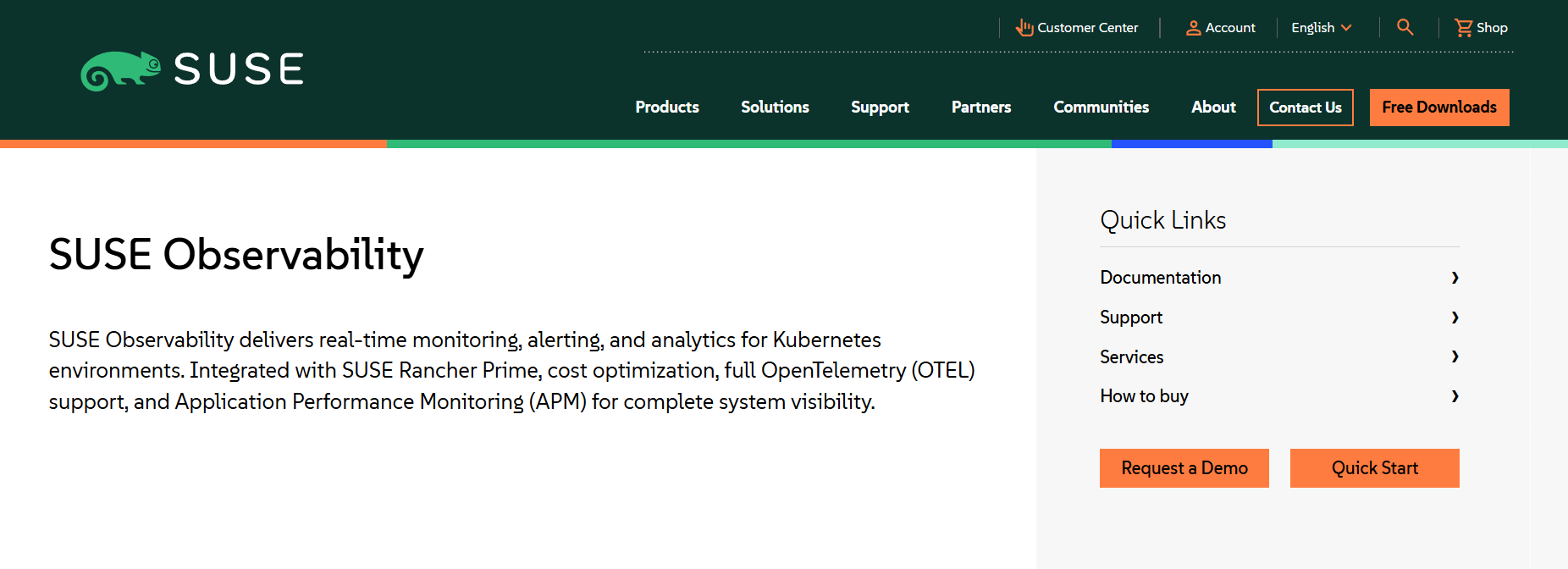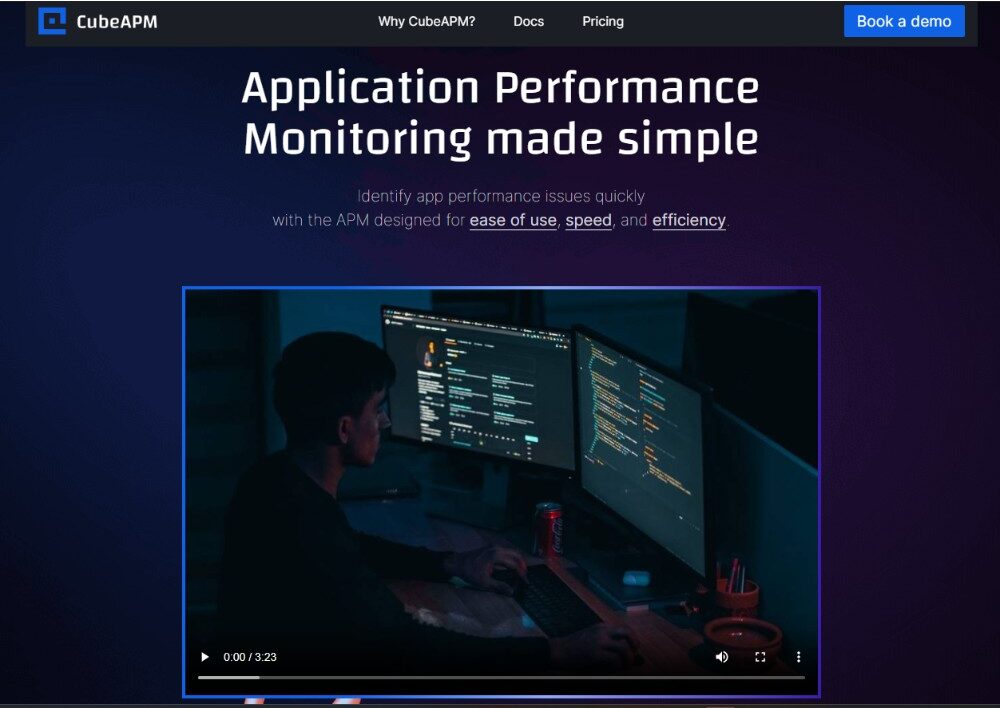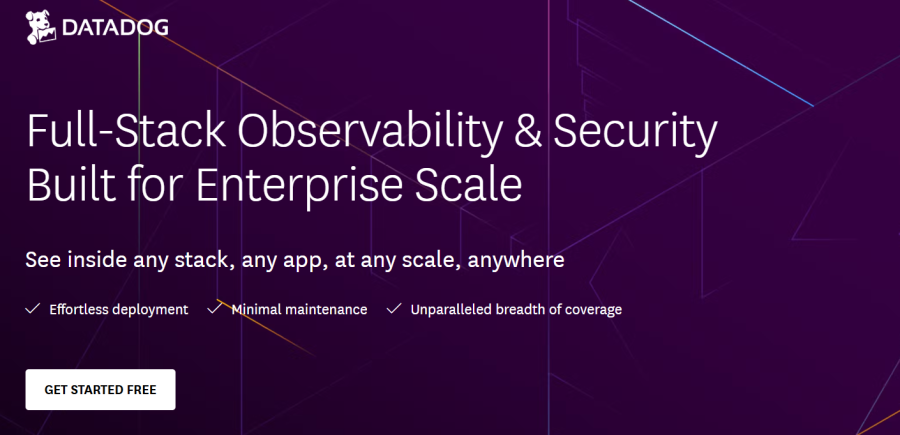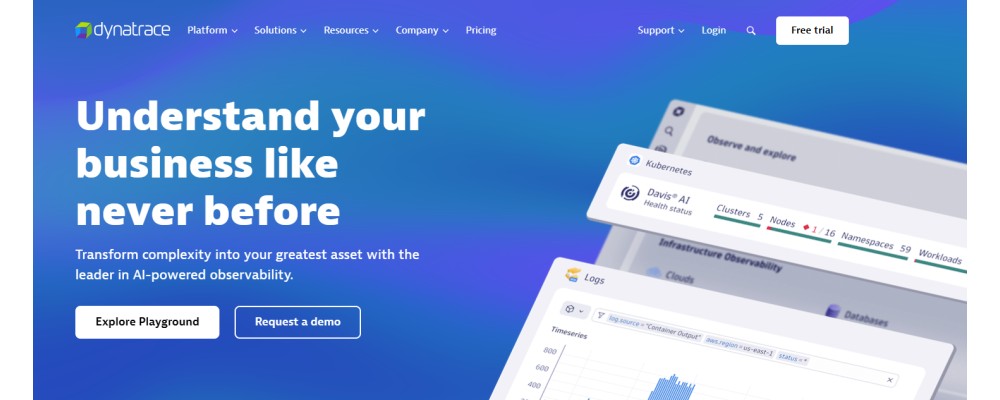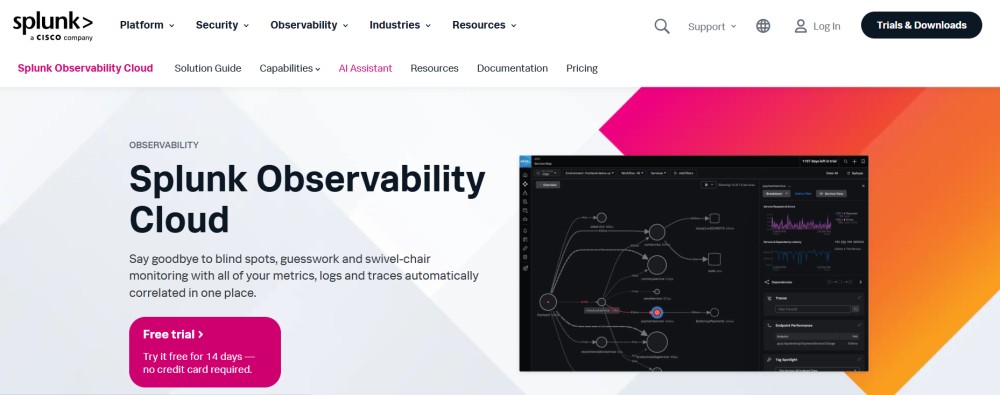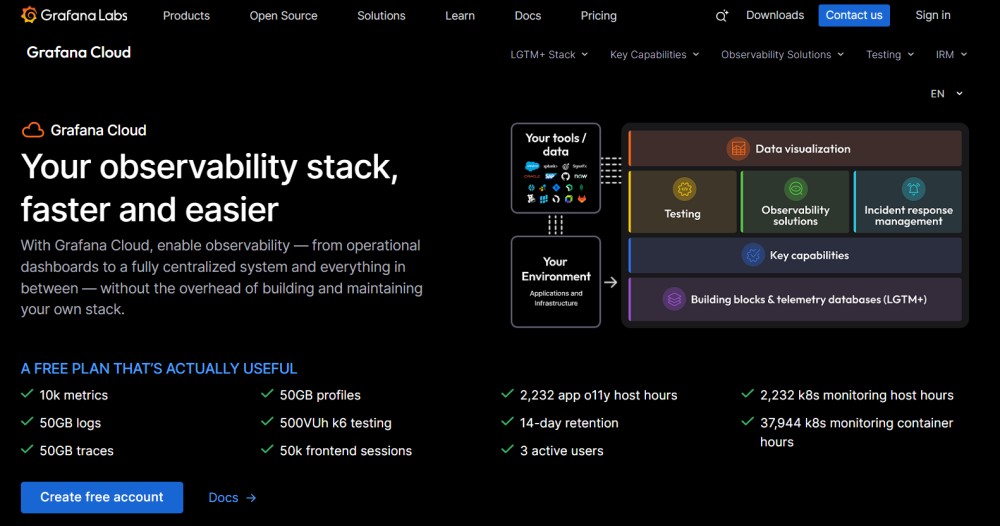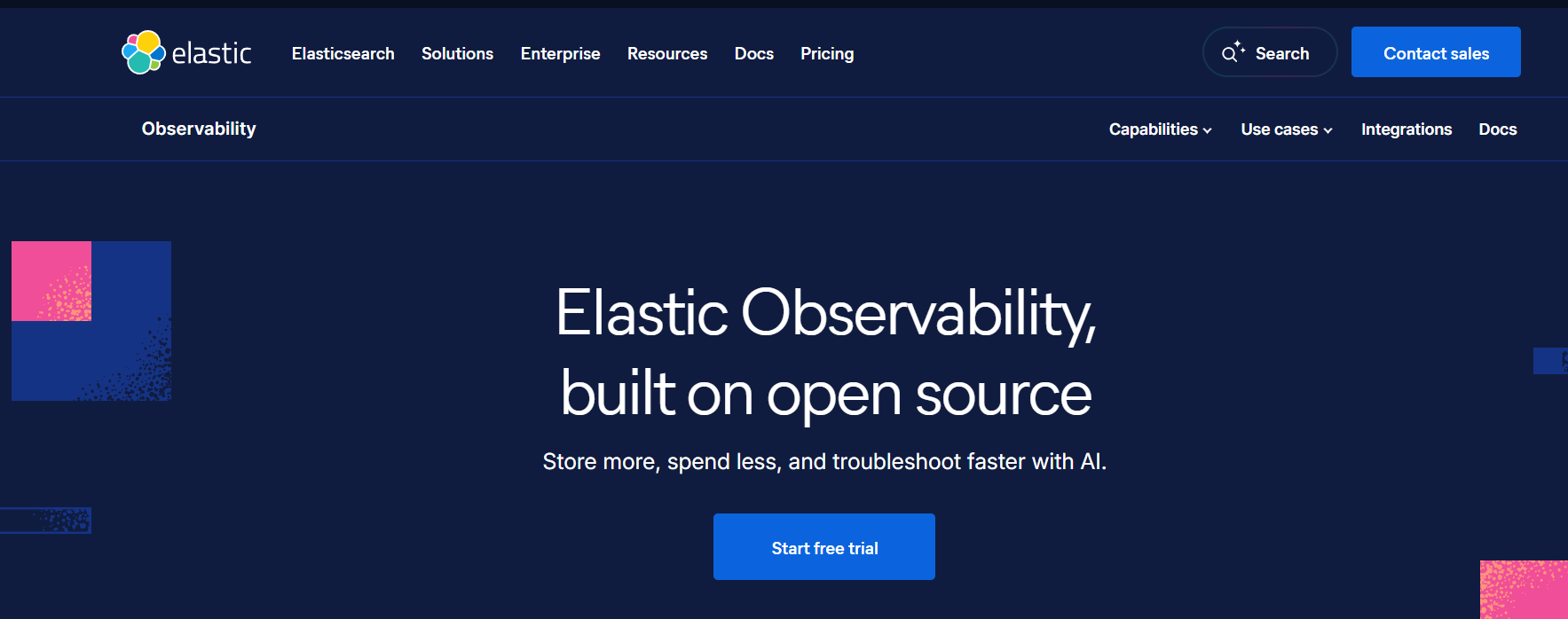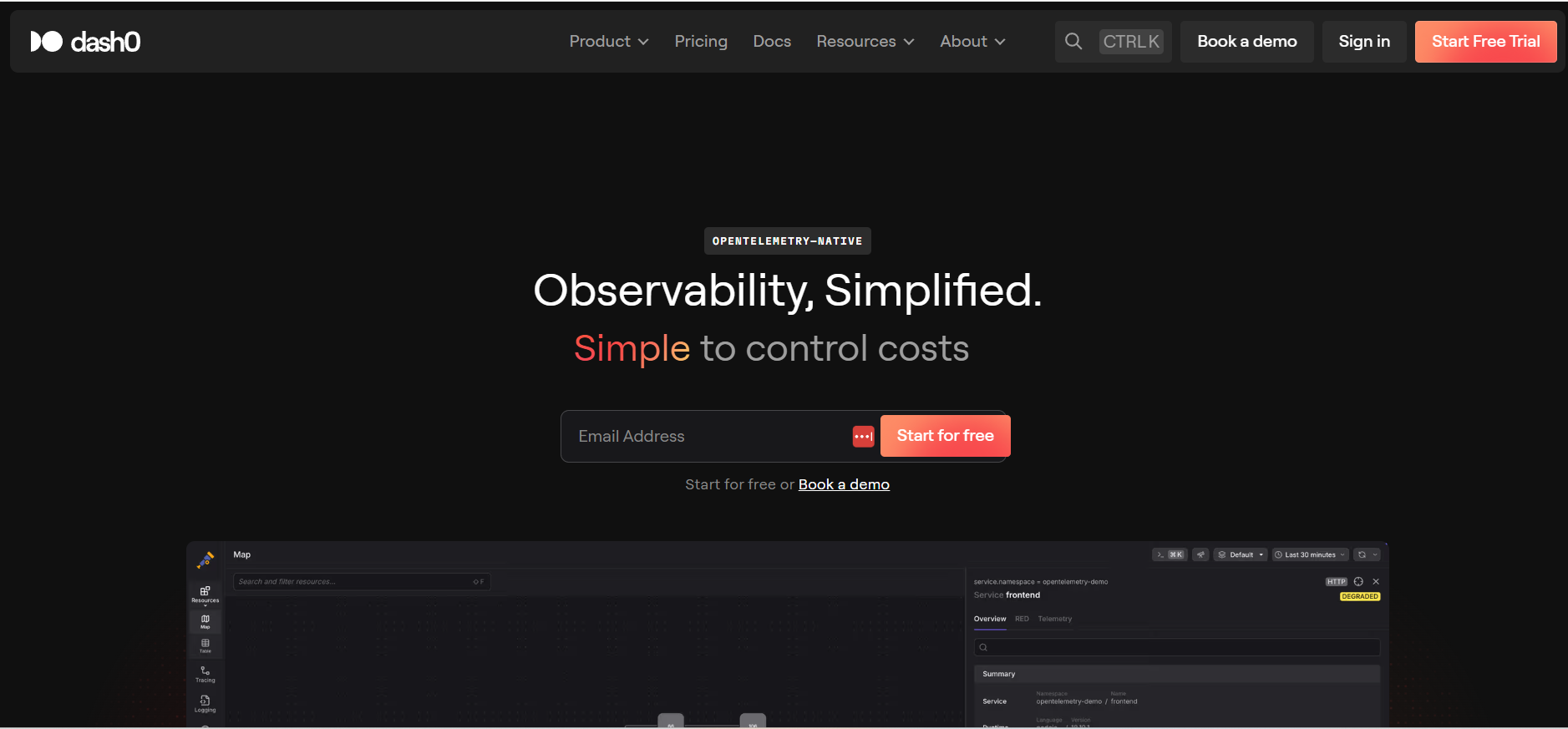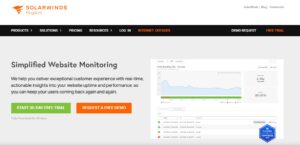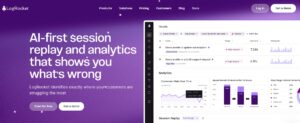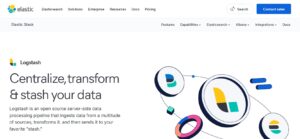SUSE Observability (part of Rancher Prime and available as SUSE Cloud Observability) is a Kubernetes-first platform that unifies metrics, logs, traces, topology, and guided remediation to speed up RCA across clusters and workloads. What makes this timely: cloud-native adoption hit 89% in 2024, so teams are re-evaluating their monitoring stack as environments scale and diversify.
That growth also exposes pain points users cite: SUSE’s focus is strongest inside Kubernetes/Rancher estates, which can leave gaps for broad, heterogeneous APM use cases. The Cloud tier’s default telemetry retention is short (~1 day for events/logs/metrics; ~12 hours for traces) and buyers often encounter sales- or marketplace-driven pricing rather than a public rate card. Reviewers also mention pricing model challenges at scale and tuning needs in very large estates.
CubeAPM is the best SUSE Observability alternative as it’s OTel-first, full MELT, smart sampling, self-hosting/BYOC for data residency, and predictable pricing (e.g., $0.15/GB ingestion)—plus responsive Slack/WhatsApp support direct to engineers.
Table of Contents
ToggleTop 8 SUSE Observability Alternatives
- CubeAPM
- Datadog
- Dynatrace
- New Relic
- Splunk Observability Cloud
- Grafana Cloud
- Elastic Observability
- Dash0
Why teams are looking for SUSE Observability alternatives
K8s-first scope vs. complete MELT needs
SUSE Observability is strongest in Kubernetes/Rancher estates with topology, guided remediation, and OTel-based APM for containerized workloads. Teams with significant non-K8s footprint (serverless, VMs, legacy apps, browser UX, external APIs) often want deeper end-user visibility (RUM) and synthetic monitoring baked in to complete MELT. SUSE’s product pages and docs emphasize K8s-centric visibility and OTel, but do not advertise native RUM/synthetics as first-class modules—so many buyers pair SUSE with separate UX tools.
Retention windows differ (SaaS vs self-managed)
For SUSE Cloud Observability, the standard retention is 30 days for events and metrics, 14 days for logs, 30 days for topology, and 7 days for traces. But the self-managed event/logs store defaults to 30 days (configurable). Teams with longer forensic or compliance requirements evaluate alternatives—or plan for custom pipelines/cold storage.
Pricing predictability at scale
Per SUSE’s product page, SUSE Cloud Observability uses simple monthly bundles plus usage: $9.99/host/month for 10–100 hosts with a $99 base (min. 10 hosts) and $8.99/host/month for >100 hosts with a $899 base (includes 100 hosts). Data beyond the built-in allocation is billed at $0.15/GB.
Each account also includes small freebies—5 GB of logs, 5 GB of metrics, 5 GB of traces—and an ongoing 7 MB/hour per host per data type allowance; anything above that accrues per-GB charges. (The page notes these bundles are billed hourly under the hood but shown as monthly for clarity.)
Example: Cost Estimation for 10 TB/month telemetry
For a mid-size org with 100 hosts, 60% logs, 30% traces, and 10% metrics
- Included per type: 7 MB/hour/host × 720 h × 100 hosts = ~504 GB free for each of logs, traces, and metrics; add the page’s 5 GB/type freebies → ~509 GB/type included.
- Billable GB: Logs 6,000−509 = 5,491 GB; Traces 3,000−509 = 2,491 GB; Metrics 1,000−509 = 491 GB → Total = 8,473 GB.
- Data fees: 8,473 × $0.15 = $1,270.95.
- Base/host fee (100 hosts): $899/month (includes 100 hosts).
- Estimated SUSE Cloud Observability total: ≈ $2,170/month (before any private discounts).
Side note on self-managed: SUSE Observability (self-managed) doesn’t publish a simple rate card; TCO depends on your infra/HA sizing. If you’re planning on-prem/BYOC, model infra + ops alongside your projected data growth.
Learning curve and scale considerations
G2 reviewers praise ease of initial rollout, helpful support, and fast time-to-value, while noting a learning cycle to fully integrate the application layer, a previously missing management feature that was road-mapped, and the need to scope anomaly detection carefully when your estate reaches hundreds of thousands of components. These are typical scale frictions that prompt evaluations. (G2)
Ecosystem & consolidation pressures
Across Reddit and practitioner forums in 2024–2025, teams cite tool sprawl and ballooning observability bills as reasons to consolidate onto OTel-first platforms with simpler per-GB economics—a context that influences SUSE buyers as well when they benchmark alternatives. (Reddit)
Criteria for selecting SUSE Observability alternatives
OpenTelemetry-native across all signals
Prioritize vendors with first-class OTel ingestion for metrics, logs, traces (and easy Collector pipelines) so you’re not locked into proprietary agents and can reuse existing exporters. CNCF’s 2024/2025 surveys show near-ubiquitous cloud-native adoption—OTel alignment protects you from future vendor switches.
Complete MELT and user-experience coverage
Select platforms that cover APM + infra + DB + logs and extend to RUM and synthetic monitoring (or integrate cleanly), so you can tie backend issues to real user impact and proactively test critical journeys. (Many teams evaluating SUSE add separate UX tooling for this.)
Sampling and pipeline controls for cost
Look for context-aware (“smart”) sampling and pre-storage pipeline controls (drop/transform/downsample by service, endpoint, severity) to cap cost without losing signal. This matters more as trace volumes surge; platforms that emphasize smart sampling can retain high-value traces at a fraction of the volume.
Deployment models & data residency
Ensure options for SaaS, self-managed, or BYOC and region-pinned storage/PII controls that match your compliance posture. If you expect air-gapped or data-local deployments, verify documented paths and sizing guidance up front.
Cost model transparency and TCO
Prefer simple, per-GB models (with clear infra estimates if self-hosting) over multi-meter pricing that combines hosts, series, span volume, synthetic packs, and retention extras. If you choose a multi-meter model like SUSE’s SaaS, model your host count, data mix, and allowances to prevent bill surprises.
Kubernetes–APM correlation depth
In practice, you need a one-click path from a failing K8s object to the slow span/DB call to the impacted user journey. Validate service maps, topology overlays, golden signals, DB/runtime profiling, and auto K8s↔APM correlation on your stack.
Migration fit & integrations
Favor OTel-first vendors that can ingest from Prometheus, Datadog/New Relic-compatible agents, and ship with migratable dashboards/templates, so you can cut over with minimal toil.
SUSE Observability Overview
Known for
SUSE Observability (including SUSE Cloud Observability and the self-managed option for Rancher Prime) is known for being Kubernetes-first with deep topology-aware views, OpenTelemetry-native APM, and guided remediation that shortens root-cause analysis. It correlates metrics, logs, traces, events, and changes across clusters and services, and plugs into everyday incident tooling (Slack, Teams, PagerDuty, Opsgenie) for faster response.
Standout Features
- Kubernetes-aware topology & RCA: Auto-discovers service and infrastructure relationships, links symptoms to probable causes, and guides operators to resolution with built-in remediation content.
- OpenTelemetry-first APM: Native OTLP (gRPC/HTTP) ingest with clear setup guides so you can standardize on OTel for traces, metrics, and logs.
- Alerting with chat/ops tools: One-click integrations for Slack, Microsoft Teams, PagerDuty, and Opsgenie keep incidents visible in the tools teams already use.
- Topology-aware change tracking: Correlates configuration changes with topology shifts to speed up post-change troubleshooting.
- Fast SaaS onboarding with transparent bundles: Clear host-based bundles plus per-GB usage and documented free allowances simplify first-month planning.
Key Features
- OpenTelemetry ingestion: Accepts OTLP over gRPC/HTTP; docs cover Collector setup and pipelines for traces, metrics, and logs.
- Guided remediation & out-of-the-box monitors: Ships monitors and runbooks for common Kubernetes failure modes, so engineers have step-by-step guidance.
- Kubernetes topology & health: Topology maps, health indicators, golden-signals dashboards, and service dependency context tuned for K8s and Rancher estates.
- Alerting & notifications: Configurable notifications to Slack/Teams/PagerDuty/Opsgenie, including self-managed Slack setup guidance.
- Tail-based sampling support (via OTel Collector): Documented tail-sampling patterns help keep slow/error traces while cutting noise and cost.
- SaaS/self-managed: SUSE Cloud Observability is available in both SaaS and self-managed options, so you can pick whatever suits you the most.
Pros
- Kubernetes-first design with strong Rancher integration
- OpenTelemetry-native pipelines and clear setup docs
- Guided remediation and topology-aware RCA reduce time to fix
- Built-in alerting integrations with Slack, Teams, PagerDuty, and Opsgenie
- Transparent SaaS bundles with published host tiers and per-GB usage
Cons
- Some reviewers note that you must carefully scope anomaly detection at very large component counts
- Occasional feedback about UI polish and learning curve when expanding beyond core K8s use cases
- Multi-meter SaaS model means costs still scale with ingest volume despite allowances
Best for
Platform and SRE teams running Kubernetes-heavy estates (Rancher or mixed cloud) that want OTel-first APM coupled with topology-aware troubleshooting, guided remediation, and chat/ops alerting—with the flexibility to start in SaaS and move to self-managed when data-residency or custom controls require it.
SUSE Observability Pricing & Customer Reviews
- Pricing: $9.99/host/month for 10-100 hosts, with a $99 base (10 hosts); $8.99/host/month for over 100 hosts with a $899 base (includes 100 hosts). Additional usage $0.15/GB beyond free allocations. Each account includes 5 GB of logs, 5 GB of metrics, 5 GB of traces, plus 7 MB/hour per host per data type ongoing allowance. Larger configs billed as multiples.
- G2 rating: 4.5/5 (28 reviews)
- Praised for: topology views; K8 insights, quick time-to-value, responsive support.
- Criticized for: Need to tune anomaly detection carefully at a very large scale; some requests for UI refinements.
Top 8 SUSE Observability Alternatives
1. CubeAPM
Known for
OpenTelemetry-first, full-stack observability that runs on your infrastructure. CubeAPM emphasizes smart sampling, fast troubleshooting across traces/logs/metrics, and a flat $0.15/GB ingestion price with no add-on SKU maze—plus RUM, synthetic monitoring, infra monitoring, log management, error tracking, and SLOs in one platform.
Standout Features
- Smart sampling: Context-aware sampling keeps high-signal traces (errors/latency outliers) while trimming noise to control storage and compute costs.
- Runs on your infra: Deploy on-prem/BYOC to keep data local, reduce egress, and meet data-residency/compliance needs.
- 800+ integrations: Prebuilt hookups across CI/CD, messaging, cloud, databases, and observability stacks—plug-and-play with OTLP, Prometheus, and even existing New Relic/Datadog agents.
Key Features
- Full MELT coverage: Traces, logs, metrics, and events with built-in dashboards, distributed tracing, service graphs, and RED metrics for fast RCA.
- Real User Monitoring: Front-end visibility into user journeys and performance bottlenecks; optimized for on-prem speed.
- Synthetic monitoring: Proactive, scripted checks to validate critical paths and catch regressions before users do.
- Infrastructure monitoring: Hosts, containers, databases, and cloud services—correlated with application spans for end-to-end context.
- Log management: Fast search and correlation with traces; privacy-first design so logs don’t leave your cloud.
- Error tracking & SLOs: Error inbox, burn-rate SLOs, and rich alerting to Slack, PagerDuty, email, and webhooks.
Pros
- Predictable $0.15/GB ingestion-only pricing
- Self-host/BYOC deployment keeps data on your infra
- Native OpenTelemetry and Prometheus compatibility
- Strong out-of-the-box dashboards and fast trace search
Cons
- Not suited for teams looking for fully managed off-prem (SaaS) solutions
- Strictly an observability platform and does not include cloud security posture management
- Self-hosting means you own infra operations
Best for
Engineering and platform teams that want OTel-native, full-stack observability with on-prem/BYOC control, predictable costs via smart sampling and per-GB pricing, and complete MELT—including RUM and synthetics—without shipping data to a third-party cloud.
CubeAPM Pricing & Customer Reviews
- Pricing: $0.15/GB ingestion, no extra per-feature charges
- G2 rating: Not listed (emerging vendor)
- Praised for: Simple per-GB pricing, on-prem data control, quick time-to-value with built-in dashboards
- Criticized for: No fully managed SaaS option; infra operations remain in-house
CubeAPM vs SUSE Observability
Both are Kubernetes-savvy and OpenTelemetry-friendly. SUSE offers Rancher/K8s with a SaaS bundle, plus pricing is per-GB. On the other hand, CubeAPM runs on your own infra with RUM/synthetics and smart sampling, with a simple cost of $0.15/GB, making it a strong choice when data residency and predictable TCO are top priorities.
2. Datadog
Known for
A broad, cloud-native observability platform that unifies infrastructure, APM, logs, RUM/Session Replay, synthetics, and more in one SaaS. It’s popular for fast time-to-value, an intuitive UI, and a huge ecosystem—900+ technology integrations—that lets teams instrument almost anything and correlate it in one place.
Standout Features
- All telemetry in context: Correlate traces with logs, metrics, database calls, network signals, and release changes to speed root-cause analysis.
- Digital experience monitoring: RUM for web and mobile plus Session Replay to see exactly what users experienced.
- Proactive synthetics: Code-free API and browser tests to simulate user flows and catch regressions before customers do.
- Watchdog: Finds risky deployments and anomalies to lower your team’s alert fatigue and improve triaging.
Key Features
- APM & distributed tracing: Code-level visibility, thread-level traces, service maps, change tracking, and SLOs—directly linked to infra and DB signals.
- Infrastructure monitoring: Host, container, serverless, and network coverage with tag-based analytics and broad integrations.
- Log management: Ingest pipelines, selective indexing with tiered retention, long-term archives, and rehydration for investigations.
- RUM & mobile RUM: Session-level insights, Core Web Vitals, funnel analysis, and mobile SDKs for iOS/Android.
- Synthetic monitoring: API and browser checks, scheduling, and assertions for critical journeys and SLAs.
- Error Tracking: offers cross-source grouping, Exception Replay, issue-centric workflows, and stack traces.
Pros
- Extremely broad product surface with deep APM, logs, RUM, and synthetics
- 900+ integrations for quick coverage across modern stacks
- Strong correlation of frontend and backend signals in one UI
- Mature SaaS with documentation, training, and enterprise features
Cons
- Pricing can become complex and expensive as features and data scale
- Cost drivers include indexed logs/spans, custom metrics, and synthetic run volume
- Initial setup and governance can feel heavy in very large estates
Best for
Mid-to-large engineering organizations that want a single, managed platform for the entire telemetry spectrum—infra + APM + logs + RUM + synthetics—with excellent integrations and the ability to correlate everything from user sessions to code-level spans without stitching multiple tools together.
Datadog Pricing & Customer Reviews
- Pricing: Transparent list pricing by SKU. Examples (annual billing): Infrastructure Pro $15/host-month; APM $31/APM-host-month plus $0.10/GB APM ingestion; Logs $0.10/GB ingestion with indexed events priced per million and by retention (e.g., 7-day index $1.27/M events); RUM Measure $0.15 per 1,000 sessions, Session Replay $2.50 per 1,000 sessions; Synthetics: API $5 per 10k runs, Browser $12 per 1k runs; Error Tracking starts at $25 for first 50k errors/month. Multi-year/volume discounts available
- G2 rating: 4.4/5
- Praised for: Rich integrations and visualizations; unified troubleshooting from user session to service/DB; breadth of add-ons when teams grow
- Criticized for: Pricing complexity and surprise bills when indexed log/spans, custom metrics, or synthetic runs grow faster than expected; teams often need governance to keep costs predictable
Datadog vs SUSE Observability
Datadog is the broader platform—spanning APM, logs, infra, RUM/Session Replay, synthetics, and more—with granular usage-based pricing per product. SUSE Observability is more Kubernetes/Rancher-first with simpler bundles; if you want a single SaaS to cover every layer (and you’re ready to actively manage costs across SKUs), Datadog offers the wider toolbox.
3. Dynatrace
Known for
Dynatrace is an enterprise monitoring tool with automatic discovery (OneAgent), AI-driven causal analysis (Davis AI), and a unified data platform (Grail) that brings APM, infrastructure, logs, and digital experience together for fast, explainable answers at scale.
Standout Features
- Davis AI for causality: Surfaces the root cause (not just symptoms) by analyzing topology, dependencies, and telemetry in context—reducing noisy alerts and triage time.
- OneAgent automation: Auto-discovers apps, containers, processes, services, and infrastructure, instrumenting new components as they appear in dynamic environments.
- Grail data lakehouse: Unifies metrics, logs, traces, and events for “query anything” speed and long-horizon analytics, including security investigations that pivot across signals.
Key Features
- Application observability: Distributed traces, SLOs, baselining for serverless and K8s workloads, and support for OpenTelemetry alongside native instrumentation.
- Infrastructure observability: End-to-end coverage across hosts, containers, Kubernetes, and clouds with dependency-aware health.
- Digital experience (DEM): RUM for web & mobile plus Session Replay to reproduce user journeys and pinpoint UX defects.
- Log management & analytics: Cost-effective ingest/retention with instant access, correlated with traces/events for faster RCA.
- Business analytics: Turn telemetry into business KPIs and journey insights to connect technical signals with outcomes.
Pros
- AI-driven, causal root-cause workflows (Davis)
- Automatic discovery/instrumentation at large scale (OneAgent)
- Unified data platform (Grail) that correlates logs, metrics, traces, events
- Impressive RUM & Session Replay
Cons
- Premium pricing perception and consumption governance needed
- Learning curve for new teams due to platform depth
- Some pricing details sit behind commitments and rate cards
Best for
Enterprises running complex, fast-moving estates (multi-cloud, microservices, Kubernetes, serverless) that need automated instrumentation, AI-assisted RCA, and full-stack MELT—plus the ability to connect reliability signals with user experience and business impact in one place.
Dynatrace Pricing & Customer Reviews
- Pricing: $0.08/hr/8GB host for full-stack monitoring
- G2 rating: 4.5/5
- Praised for: Automated discovery, AI-driven insights, unified view from infra to UX, scalability at enterprise size
- Criticized for: Pricing complexity/premium positioning; onboarding depth, creating a learning curve in very large estates
Dynatrace vs SUSE Observability
Although both target cloud-native businesses, Dynatrace focuses on AI-assisted causality with its advanced Davis AI, auto-instrumentation with OneAgent, and a lakehouse with Grail. SUSE Observability is Kubernetes/Rancher-first with clear SaaS bundles and OTel support; Dynatrace is the better fit when you need automated discovery across huge, heterogeneous environments and want AI to explain why something broke—not just what broke.
4. New Relic
Known for
A polished, developer-friendly observability suite that pulls APM, infrastructure, logs, RUM (web + mobile), synthetics, and business journeys (Pathpoint) into one place. Teams like the curated onboarding (quickstarts), strong visualization, and the ability to trace from user session to code-level spans with minimal context switching.
Standout Features
- APM 360 & Transaction 360: Unified troubleshooting that links service health, traces, changes, infra, and user impact—so you can jump straight to the slow transaction or erroring dependency.
- Digital experience monitoring: Browser (RUM) and Mobile RUM with Core Web Vitals, funnels, and Session Replay to see exactly what happened for an affected user.
- Pathpoint (business observability): Map customer journeys and business stages to technical telemetry to understand incident impact in revenue or conversion terms.
Key Features
- Application monitoring: Distributed tracing, error analytics, change tracking, service maps, SLOs—integrated with logs/infra for faster RCA.
- Infrastructure monitoring: Hosts, containers, Kubernetes, cloud services, and config change tracking for full-stack context.
- Log management: Pipelines, in-context logs with APM, and search/analytics to accelerate investigations.
- Synthetics: API and browser checks with generous included runs per edition, plus on-demand checks at a low per-check rate.
- Business analytics: Tie telemetry to KPIs and journeys to prioritize fixes by business impact.
Pros
- From user session and trace to infrastructure monitoring, you get an end-to-end workflow
- Mature browser and mobile monitoring with Session Replay
- Clean developer UX with curated quickstarts and dashboards
- Broad feature set without stitching multiple tools
Cons
- Data ingestion and add-on usage can raise costs as volume grows
- Some advanced analytics and enterprise options require higher editions
- Governance needed to manage indexed data and synthetic runs at scale
Best for
New Relic is excellent for teams that are looking for a developer-friendly UI that can offer everything (APM + logs + infra + RUM + synthetics). It’s also ideal when you need to analyze technical RCA as well as and business impact.
New Relic Pricing & Customer Reviews
- Pricing: Usage-based with a perpetual free tier (100 GB/month ingest); beyond that, data is billed per GB (public page shows $0.40/GB). Editions (Standard/Pro/Enterprise) define compute entitlements and include features. Synthetics includes free checks by edition (e.g., 10k/month on Standard) and overages at $0.005 per check. Exact terms can vary by plan and region; volume discounts and contracts available
- G2 rating: Typically ~4.3–4.4/5 in 2025 across APM/Observability listings, reflecting strong adoption and satisfaction with room to optimize cost controls
- Praised for: Quick time-to-value, polished APM and RUM, clear visualizations, and the ability to connect telemetry with business journeys via Pathpoint
- Criticized for: Cost management at high ingest volumes and the need to tune data indexing/retention and synthetic usage to avoid surprises
New Relic vs SUSE Observability
New Relic is broader on end-user experience (web + mobile RUM, Session Replay) and business mapping (Pathpoint), while SUSE Observability is more Kubernetes/Rancher-first with straightforward SaaS bundles. If you want a developer-centric UI that stitches user journeys → traces → logs/infra and can show business impact alongside technical RCA, New Relic is a strong fit; if your priority is Rancher-aligned K8s operations with simple host + per-GB pricing, SUSE stays appealing.
5. Splunk Observability Cloud
Known for
Splunk Observability Cloud is a full-stack, OpenTelemetry-native observability suite with real-time streaming analytics and NoSample™ full-fidelity tracing. It brings APM, infrastructure monitoring, RUM, synthetic monitoring, and log context (via Log Observer Connect) together so teams can pivot from a customer session to the exact backend service and log line in seconds.
Standout Features
- OpenTelemetry-native: Instrument once on the open standard and send metrics, logs, and traces without lock-in.
- NoSample™ full-fidelity tracing: Collect and analyze 100% of traces for precise RCA—no guessing which spans were dropped.
- Logs-in-context (Log Observer Connect): Pull application and infrastructure logs from Splunk Platform right into APM workflows for “why” behind the metrics.
- Streaming analytics: Second-level granularity and high-cardinality analytics for fast, accurate alerts and SLOs.
- AI-assisted guidance: Service maps, trace analytics, and anomaly hints that shorten investigation time.
Key Features
- Application performance monitoring: Distributed tracing, service maps, dependency analysis, release/change correlation, and AlwaysOn code profiling for Java, .NET, and Node.js.
- Infrastructure monitoring: Real-time visibility across hosts, containers, Kubernetes, and cloud services with tag-based analytics.
- Real User Monitoring: End-to-end visibility from browser/mobile sessions to backend services, including Core Web Vitals.
- Synthetic monitoring: API, browser, and uptime checks with private locations and CI/CD hooks for pre-production gating.
- Business-aware troubleshooting: Tie telemetry to business workflows and prioritize fixes by customer impact.
Pros
- OTel-first design with 100% trace ingest
- Fast streaming analytics and high-cardinality metrics
- Strong RUM and synthetics alongside APM
- Mature SaaS with enterprise readiness
Cons
- Perceived premium pricing compared with some vendors
- Setup and tuning can feel complex at first
- Governance needed for cost control at a very large scale
Best for
Engineering and SRE teams that want a managed, enterprise-grade, OTel-native platform with full-fidelity tracing, second-level analytics, and tight log correlation—ideal for high-scale microservices, Kubernetes estates, and organizations already invested in Splunk Platform for logging.
Splunk Observability Cloud Pricing & Customer Reviews
- Pricing: Starts at $15 per host/month (billed annually), with packaged tiers (Infrastructure $15/host, App & Infra $60/host, End-to-End $75/host). Individual products also have usage meters (e.g., APM from $55/host/month, RUM from $14 per 10,000 sessions, Synthetic uptime from $1 per 10,000 requests). Standard support included; premium support optional
- G2 rating: ~4.3/5 (2025), reflecting strong streaming analytics and breadth with common cost/complexity caveats
- Praised for: Full-fidelity tracing and fast analytics; broad coverage (APM + infra + RUM + synthetics); effective log correlation for RCA
- Criticized for: Premium pricing perception; initial complexity; need for ongoing cost governance at very large ingest volumes
Splunk Observability Cloud vs SUSE Observability
Both are Kubernetes-savvy and open-standards friendly. Splunk leans into OTel-native + NoSample tracing, streaming analytics, and logs-in-context for deep, real-time troubleshooting across diverse stacks. SUSE Observability is Rancher/K8s-first with simpler SaaS bundles and allowances. If you need enterprise-scale, full-fidelity tracing and rich analytics with tight log correlation—especially alongside existing Splunk logging—Splunk Observability Cloud is the stronger fit.
6. Grafana Cloud
Known for
An open-source-first observability stack—Grafana dashboards, Mimir (metrics), Loki (logs), Tempo (traces)—delivered as a managed SaaS with optional Frontend Observability (RUM) and Synthetic Monitoring. Teams choose Grafana Cloud to keep the familiar OSS workflows while offloading scale, retention, and billing to a hosted control plane.
Standout Features
- OSS DNA: supports Prometheus for metrics (Mimir), Tempo traces, and Loki logs, and no DIY sharding, upgrades, or storage.
- Frontend Observability (RUM): Built-in web RUM to track real user sessions, frontend errors, and Core Web Vitals, with a generous free tier to start.
- Synthetic Monitoring: k6-powered API and browser tests with an included monthly execution bundle and clear pay-as-you-go overages.
Key Features
- Metrics: Mimir manages high-cardinality time series with PromQL support and horizontal scaling.
- Logs built for cost control: Grafana Cloud Logs (Loki) emphasizes label-based indexing and object storage to keep log costs predictable.
- Distributed tracing: Grafana Cloud Traces (Tempo) provides cost-efficient trace storage/querying and links to profiles via Pyroscope.
- Dashboards & Explore: Correlate metrics, logs, and traces in Grafana’s Explore view; support for multiple tracing backends (Tempo, Jaeger, Zipkin, etc.).
- Integrations & alerting: Click-to-install integrations bundle agent configs, dashboards, and alert rules; incident/alerting integrations for Slack, Jira, and more.
Pros
- Familiar OSS tooling with managed scalability
- Clear pay-as-you-go pricing and useful free tier inclusions
- Solid end-to-end story with RUM and synthetics added to MELT
- Broad integrations and pluggable data sources
- Strong community and ecosystem
Cons
- You still need governance for label/cardinality growth
- Some advanced features and higher limits require paid tiers
- DIY flexibility can introduce configuration sprawl if not standardized
Best for
Teams already invested in Prometheus/Grafana (or that want open standards) who prefer to keep the OSS mental model while gaining SaaS reliability, plus fuller coverage with RUM and synthetic checks—ideal when you want to consolidate Prom/Loki/Tempo without running it yourself.
Grafana Cloud Pricing & Customer Reviews
- Pricing: Public, tiered pricing with a low platform fee and pay-as-you-go usage; the platform fee (e.g., $19/month) includes baseline host/container hours and support, with add-ons like Synthetic Monitoring that include a monthly execution bundle before overages. Free-tier inclusions commonly feature logs (e.g., 50 GB), traces (e.g., 50 GB), and RUM sessions, then scale as you upgrade. Always confirm current SKUs and meters on the pricing page
- G2 rating: 4.5/5
- Praised for: Powerful visualization, OSS friendliness, cost-effective logs/metrics/traces at scale, and easy integrations
- Criticized for: Label/cardinality pitfalls if unchecked, occasional billing clarity questions on heavy synthetic/RUM usage, and the need for conventions to avoid dashboard sprawl
Grafana Cloud vs SUSE Observability
Grafana Cloud is best when you want the LGTM (Loki-Grafana-Tempo-Mimir) stack managed for you, plus RUM and synthetics under the same roof. SUSE Observability is Rancher/K8s-first with straightforward host+usage bundles and topology-guided ops. Choose Grafana Cloud if you’re standardizing on OpenTelemetry/Prometheus and prefer OSS-style workflows at SaaS scale; choose SUSE if you want a vendor-aligned K8s experience with guided remediation.
7. Elastic Observability
Known for
An open, search-powered observability suite that brings logs, metrics, traces, RUM, synthetics, and profiling into one workflow. Teams like Elastic for its OpenTelemetry-first ingestion, powerful Kibana analysis, and the new serverless option that removes cluster management while keeping usage-based pricing simple.
Standout Features
- Search-driven troubleshooting: Pivot across logs, metrics, and traces with Kibana to jump from symptoms to root cause quickly.
- OpenTelemetry-first APM: Lightweight, OTel-based tracing with head- and tail-based sampling, service maps, and ML-assisted correlation.
- Digital experience monitoring: Built-in RUM (web & mobile), synthetic transactions, and uptime checks to catch UX problems before customers do.
Key Features
- Application performance monitoring: Distributed traces, latency/error correlation, dependency mapping, AI Assistant for guided investigation, and LLM/GenAI app tracing.
- Infrastructure monitoring: 200+ integrations, Elastic Agent/Fleet for fleetwide data collection, and Prometheus interoperability.
- Log monitoring & analytics: High-cardinality storage and quick analysis with out-of-the-box ML to spot spikes and change points.
- RUM & Synthetics: Core Web Vitals, funnels, journey tests, anomaly detection, and proactive alerting mapped to SLOs/SLAs.
- Serverless operations: Hands-free Elastic Cloud Serverless with ingest/retention meters only (no cluster sizing), plus optional add-ons.
Pros
- Strong OpenTelemetry alignment and broad data integrations
- Search-first workflow that makes cross-signal pivots fast
- Full MELT + RUM/synthetics in a single UI
- Serverless option reduces ops toil with transparent meters
- Mature ecosystem and documentation
Cons
- Index/retention tuning still required for cost control at high volume
- Learning curve for Kibana/Elasticsearch power features
- Some advanced capabilities and higher support tiers add cost
Best for
Teams that want open-standards ingest and a search-centric workflow across logs, metrics, traces, and UX—especially those who value serverless pricing (ingest + retention) and need to correlate backend performance with real user experience without running their own ELK at scale.
Elastic Observability Pricing & Customer Reviews
- Pricing: Serverless Logs Essentials billed per GB (as low as $0.105/GB ingest, $0.018/GB-month retention); Serverless Complete adds full-stack features at as low as $0.150/GB ingest and $0.020/GB-month retention. Egress: first 50 GB free, then $0.05/GB. Optional add-ons include synthetic browser tests ($0.0123/test) and lightweight uptime locations ($28/location/month). Support tiers (Gold/Platinum/Enterprise) priced as a % of consumption
- G2 rating: 4.2/5 (≈80 reviews), with praise for search/visualizations and breadth, and notes about learning curve and cost tuning at very large scale
- Praised for: Fast log search and cross-signal correlation; flexible pipelines and open standards; strong UX coverage with RUM/synthetics
- Criticized for: Kibana/Elasticsearch learning curve; cost management when ingest and long retention grow rapidly
Elastic Observability vs SUSE Observability
Both deliver MELT with OpenTelemetry and Kubernetes coverage. Elastic leans into search-first analytics and serverless, ingest/retention pricing with rich RUM/synthetics and optional profiling. SUSE Observability is Rancher/K8s-first with topology-guided operations and host+usage bundles. If you want open pipelines and powerful cross-signal search without managing clusters, Elastic’s serverless model is compelling; if you want vendor-aligned Rancher operations and simple allowances, SUSE keeps things streamlined.
8. Dash0
Known for
Dash0 is an OpenTelemetry-native, developer-first observability platform that unifies APM, distributed tracing, logs, metrics, Kubernetes monitoring, website (RUM-style) monitoring, and synthetic checks. Dash0 emphasizes open standards (OTLP/PromQL/Perses) and cost transparency so teams can correlate signals without vendor lock-in.
Standout Features
- Open standards: supports OTEL natively along with PromQL and Perses-compatible dashboards.
- Kubernetes-native: You can perform RCA faster with Dash0 Kubernetes Operator and prebuilt K8s views.
- Transparent, per-event pricing: Pay by metric data points, spans, log records, and (soon) web events—no user or GB surprises.
Key Features
- APM: Dash0 has a resource-centric APM and comes with service maps, triage, and 1-click pivot across MELT.
- Distributed tracing: Dash0 offers high-cardinality filtering, OTEL-collector pipelines, and heatmaps for better RCA.
- Log management: Fast search, AI-assisted pattern grouping, and trace-context correlation; bring your existing pipelines.
- Infrastructure & Kubernetes monitoring: Prometheus/OpenTelemetry metrics, context-rich alerting, and K8s-aware views.
- Website monitoring (RUM-style): Sessions, Core Web Vitals, errors, and backend correlation for UX-to-APM visibility.
- Synthetics: offers Global API and uptime checks, assertions, SSL monitoring, and CI/IaC-friendly settings.
Pros
- OpenTelemetry-native with low lock-in
- Clear, per-event pricing and 14-day free trial
- Strong Kubernetes story (operator, K8s views)
- Perses/PromQL compatibility for dashboards and alerts
- Quick time-to-value with guided setup
Cons
- Younger ecosystem and fewer long-tail integrations than incumbents
- Some advanced features still maturing
- Governance needed to manage high-cardinality usage at scale
Best for
Engineering and platform teams that want an OTEL-first, Kubernetes-friendly platform with transparent, consumption-based pricing and code-driven dashboards/alerts—ideal for companies standardizing on open telemetry pipelines and seeking predictable costs without GB-based surprises.
Dash0 Pricing & Customer Reviews
- Pricing: $0.20 per million metric data points (13-month retention); $0.60 per million spans or span events (30-day retention); $0.60 per million log records (30-day retention); web events $0.60 per million (soon); synthetic API checks $0.20 per 1,000 (soon). 14-day free trial; fully consumption-based (no base fee). Always confirm current meters on the pricing page
- G2 rating: 4.8/5 (24+ reviews)
- Praised for: Ease of setup, OTEL-native workflow, responsive support, and transparent costs
- Criticized for: Newer product with some features still evolving; potential cost growth without label/cardinality governance
Dash0 vs SUSE Observability
Both deliver MELT coverage and embrace open standards. Dash0 leans into OTEL-first pipelines, Kubernetes-native tooling, PromQL/Perses dashboards, and per-event pricing for granular cost control. SUSE Observability offers a Rancher/K8s-aligned experience with bundled allowances. Choose Dash0 if you want developer-first workflows and consumption pricing; choose SUSE if you prefer vendor-aligned Kubernetes operations with preset bundles.
Conclusion
SUSE Observability shines in Rancher/Kubernetes ops, but many teams outgrow its scope and pricing model. Buyers cite multi-meter SaaS costs, the need to bolt on fuller MELT (RUM, synthetics), and a learning curve at a very large scale. If you want predictable spend, complete end-to-end visibility, and tighter data control, you’ll likely explore alternatives.
CubeAPM is the best SUSE Observability alternative. It’s OpenTelemetry-first with full MELT—APM/traces, logs, metrics, infra, DB, RUM, synthetics, and error tracking—plus smart sampling to keep the right data while cutting noise. Deployed on your infrastructure (or BYOC), it protects data residency and slashes egress, backed by responsive engineer-led support. Pricing stays simple: $0.15/GB ingestion, no host tax or SKU sprawl.
Ready to upgrade your observability without surprise bills? Spin up a CubeAPM proof of concept, ingest real traffic in minutes, and compare outcomes side-by-side with SUSE.

